Visiting the legend
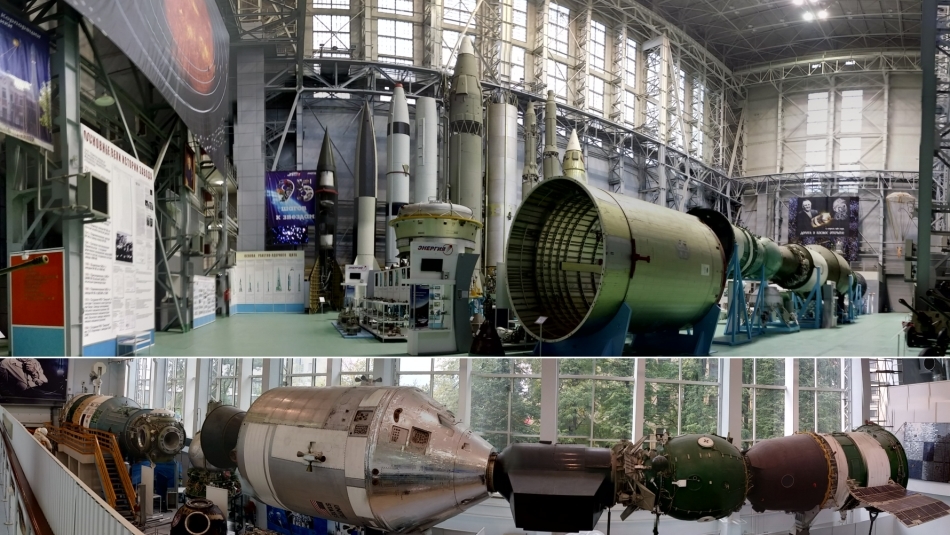
Last weekend in RSC Energia, the first in the company's history the landing of astronomers, bloggers and popularizers of astronautics took place. A dozen people from Moscow, St. Petersburg and Ufa visited two museums, which contain the legendary exhibits of our space history. These museums are not closed, but are located on a secure territory, and it is somewhat more difficult to get into them. Each of the disembarked group could have guided tours themselves, and I am sure that you will soon see some more reports. But each would have her own way. I invite you to see my version.
Frivolous entry

The entrance of the plant number 88, NII-88, OKB-1, TsKBEM, and now - RSC Energia. Cosmonautics Day is a holiday that is always with you. By the way, this photo of the rocket is the best that can be obtained without a quadrocopter. It is forbidden to take photographs on the territory of the enterprise, so the photos will be only from the outside and inside the museums.
')

Postmodern - taking photographs. We immediately see how we are adults and serious people. It is not at all surprising that, having seen the crowd of hipsters, the janitor strictly points out to us: “Do not take pictures on the territory! Pokemon do not catch! ".
First museum
The first museum has a slightly strange name - "Center for Development and Training." But it becomes clearer when we learn that schoolchildren are regularly brought here. This is a huge hangar, in which there are rockets, spacecraft and orbital stations.

On the link interactive panorama of the hangar.
The tour guide is Vakhtang Dmitrievich Vachnadze, a legendary man who became the fourth head of RSC Energia after Korolev, Mishin and Glushko and worked with him from 1977 to 1991. Here he shows his first job as a designer - steering engines for the R-7 rocket. According to his stories, Glushko refused to make rotating combustion chambers due to problems with feeding components along the axis of rotation, and Sergey Pavlovich Korolev transferred this task to young designers, including Vakhtang Dmitrievich.

The territory on which we stand, in the 40s, belonged to the artillery plant number 88, so the beginning of the exhibition - the guns. These are ZIS-2 and ZIS-3 developed at the neighboring Grabin plant, which was also transferred to the Queen in the late 50s.

Near the wall of the hangar are the first Soviet ballistic missiles.

Interactive panorama .
Extreme on the left, in the section - V-2, assembled from captured German parts. There were enough trophies for several rockets, they were launched in 1946, and one was turned into a training manual. This metal was seen by the prisoners of the Mittelverke factory, the forty-year-old Korolev, and the young designers, who are now gray. It is a pity that he can not speak.

For the Fau-2 go P-2 (an improved version adapted to the Soviet production of Fau-2 - P-1, range 550 km), P-5 (range already 1200 km), R-5M, R-9A (range up to 16,000 km, the highest), GR-1 (should have brought a warhead into orbit and had no range limitations, disassembled into two parts - first and fourth to the right) and solid-fuel missiles RT-1 and RT-2.

Next to the missiles are engines and accelerating units. Here is Block E, thanks to which the payload of the R-7 rocket increased from 1,300 to 4,500 kg, and the USSR was able to send stations to the Moon and launch man into space.

Engine 11D58M, which stands on the upper stage DM (in the background).
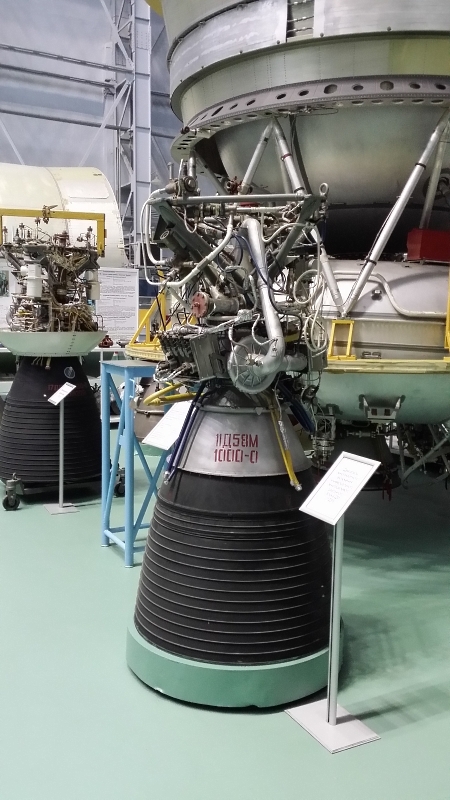
Propulsion system "Burana"

Old plans for the future. Ten years ago, the stand was quite relevant. However, the “Zenith” dimension rocket stubbornly appears in the plans because of its potential benefits, now, for example, as “Phoenix” and “Sunkar”.

After the missiles are spacecraft.
Panorama of the hall
"East", for some reason, only with half of the aggregate compartment
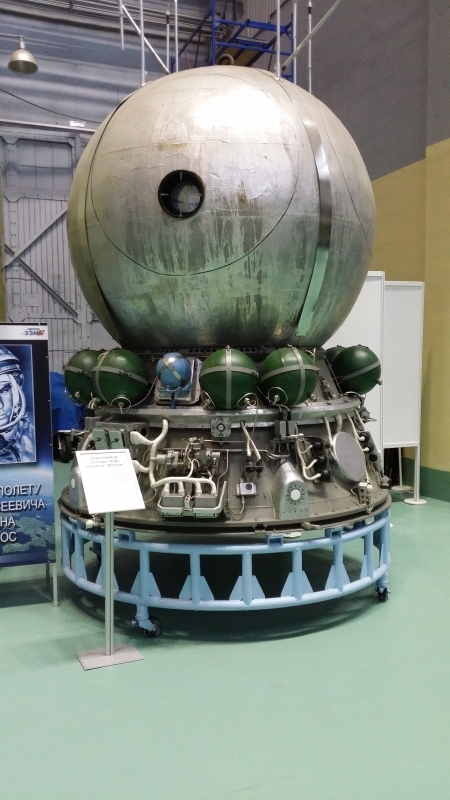
Lunar module LC
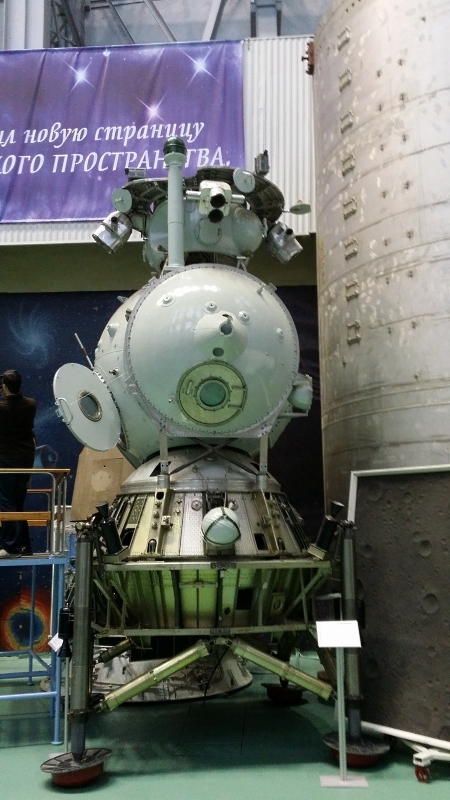
In the cockpit pustovato - it is not with a full set of equipment. The cover with the inscription looks a bit naive ...

View of the hall from the opposite side of the entrance.

Panorama from the lunar module ladder
In the corner was a model of the Clipper ship, a project closed at the end of the 2000s.
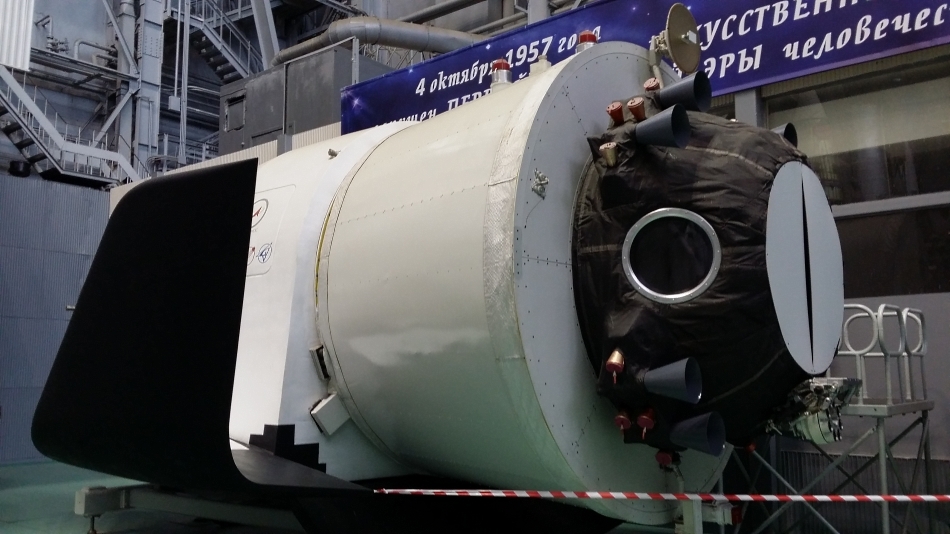
Inside view.

Another panorama of this section of the hall.
In the corner stands the conversion products, which the plant began to engage in as early as the 90s, in order to survive.

A rare unit for our space - fuel cells. We had to stand on the "Buran".

On-board submillimeter telescope BST-1M

And two astronomers from our group - Sergey Popov and Vladimir Surdin

Inside the Salyut station (ground copy to support work in orbit). Mechanical daily routine.
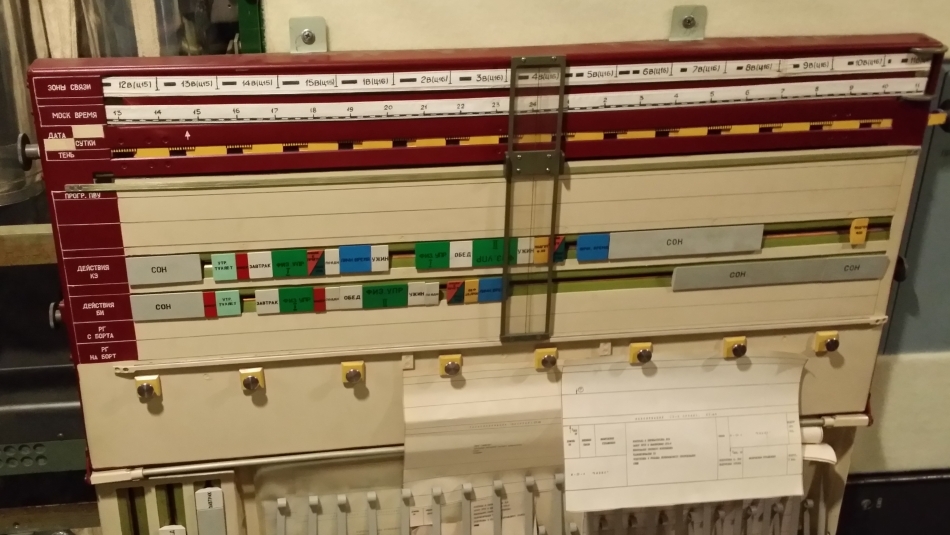
Interior station. Vladimir Surdin recalls that his Zaporozhets also smelled.

Museum of Labor Glory
In the second museum there are several expositions. First come the exhibits dedicated to the memory of SP Queen. Personal things.

Documents. That same note that spawned the legend “The Moon is firm. Signature - S.P. Korolev. " In reality, here we are talking about a manned landing, and the ground of the moon in 1964 was already more known.

Gantt chart for the construction of ships "Sunrise". No. 3 was launched with the dogs by Wind and Coal as Cosmos-110, the remaining two did not fly into space.

A small hall is dedicated to the gifts that the corporation received. Here is this reduced samurai armor - a gift from a Japanese company for success in mastering the production of vacuum cleaners and food processors (visible below)
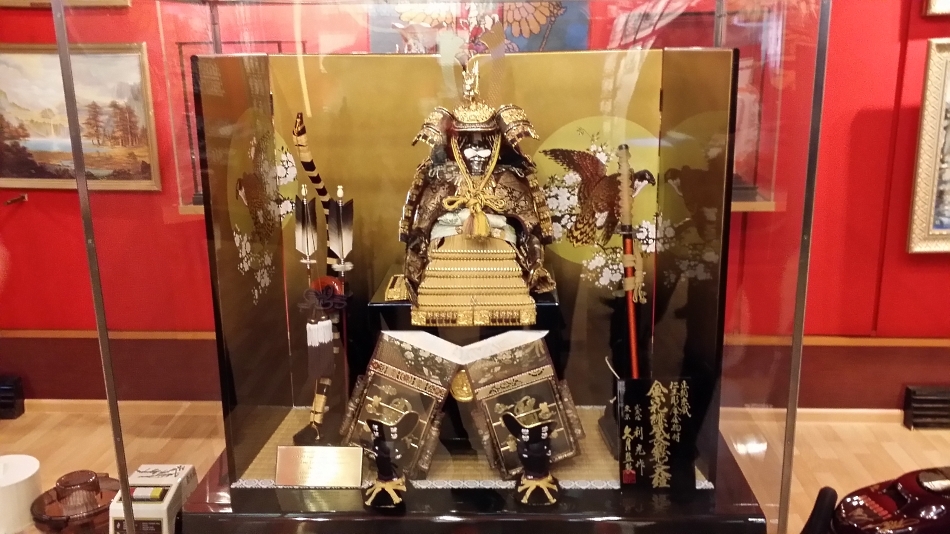
X-35 missile under Gzhel.
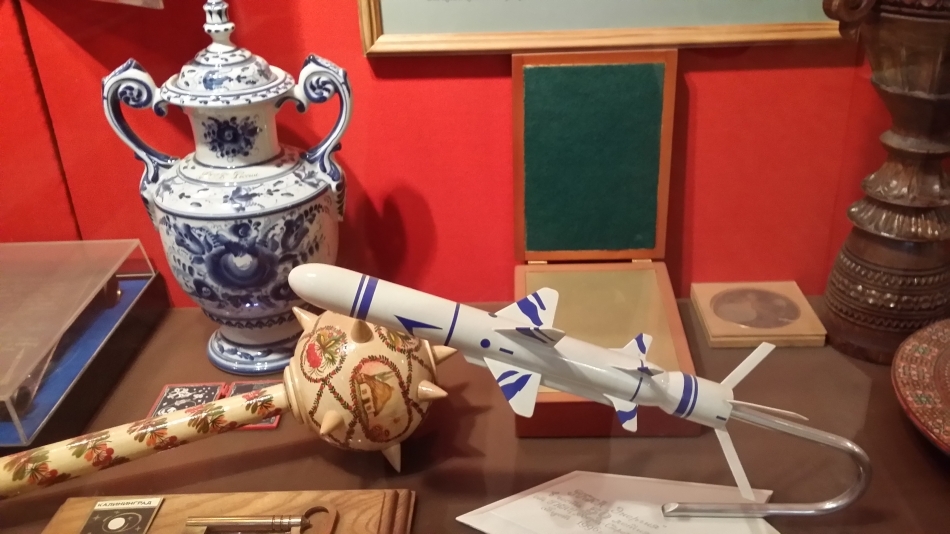
And the last hall exhibits historical spacecraft, Soyuz-Apollo and the base unit of the Mir station (ground copy to support the flight)

Panorama .
Second floor

On the second floor there are historical satellites. The object “D” or “Sputnik-3” will be recognized by many, but not when the outer skin was removed from it.

Aesthetics of the spheres. These are the "moons" -1 and -2.

"Luna 3" outside
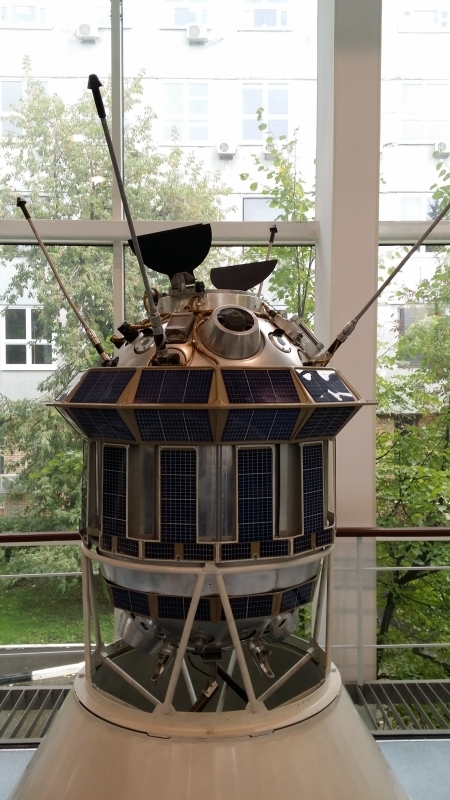
And inside

Ball again. This is the "Luna-9".

And, for contrast, the modern satellite PROTEIN

Below is the historic spacecraft. Here is the "East" in the version on which the dogs flew.

Containers, in which the already mentioned above Breeze and Ember flew.

Sad photo - mothers Koroleva and Gagarin outlived their sons

Ejection seat "East-6", which flew Tereshkova. The only thing that remained was a swamp. The remaining five crashed completely.
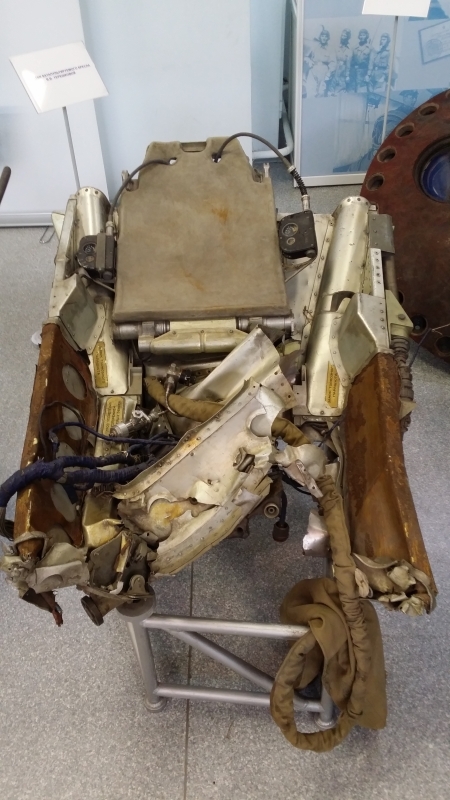
Cabin "Voskhoda-2".
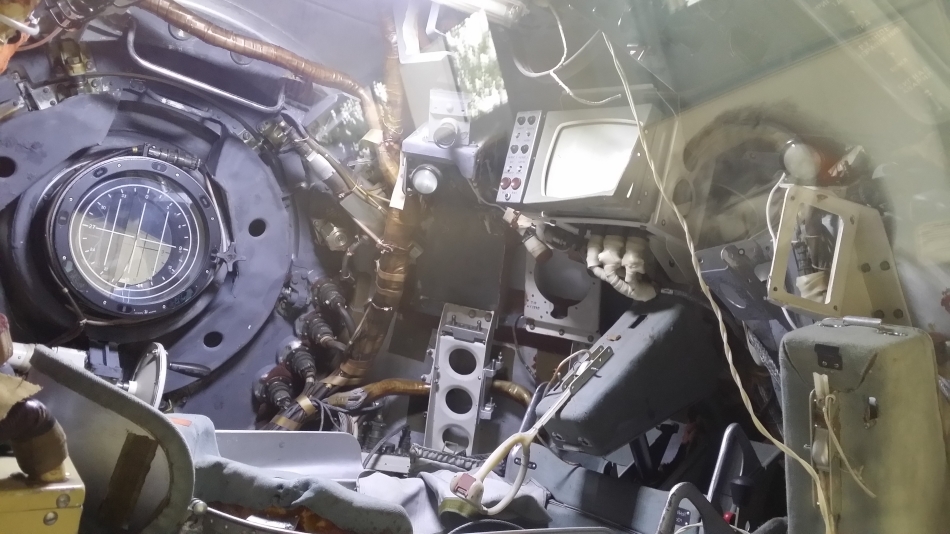
"Voskhod-2" with airlock.
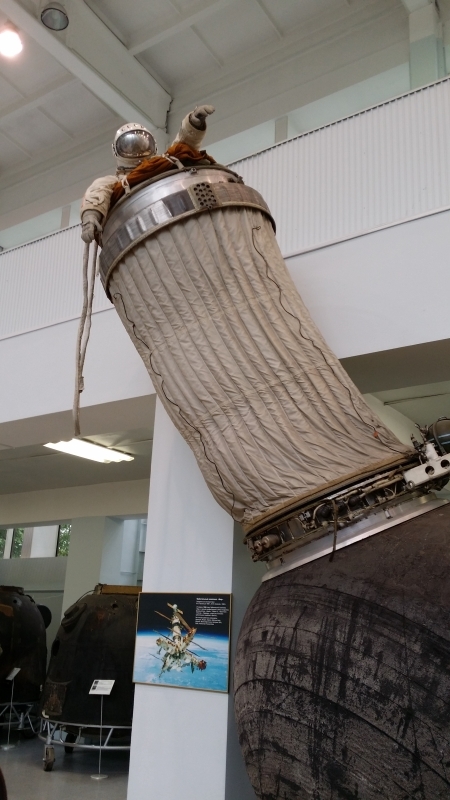
The first returned normally manned "Union" - "Soyuz-3" of the Coast. Colored lines - some kind of test.
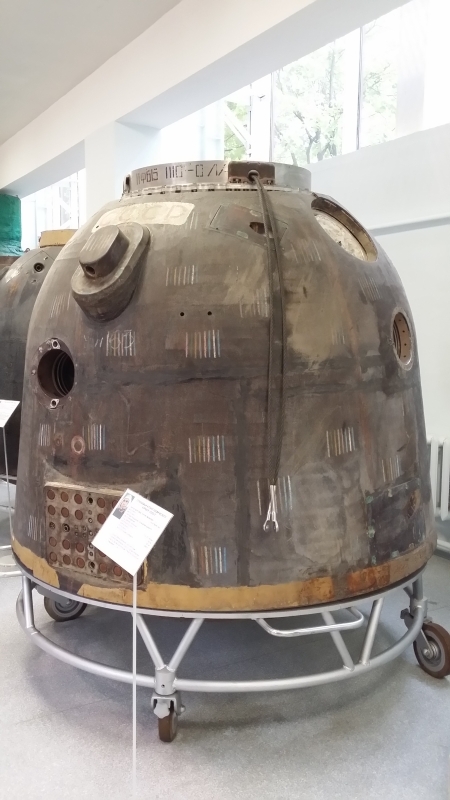
"Apollo-Soyuz" view from below

The solar panel of the Mir station, brought from orbit by the last docked shuttle. One can see blows from micrometeorites or microscopic debris.
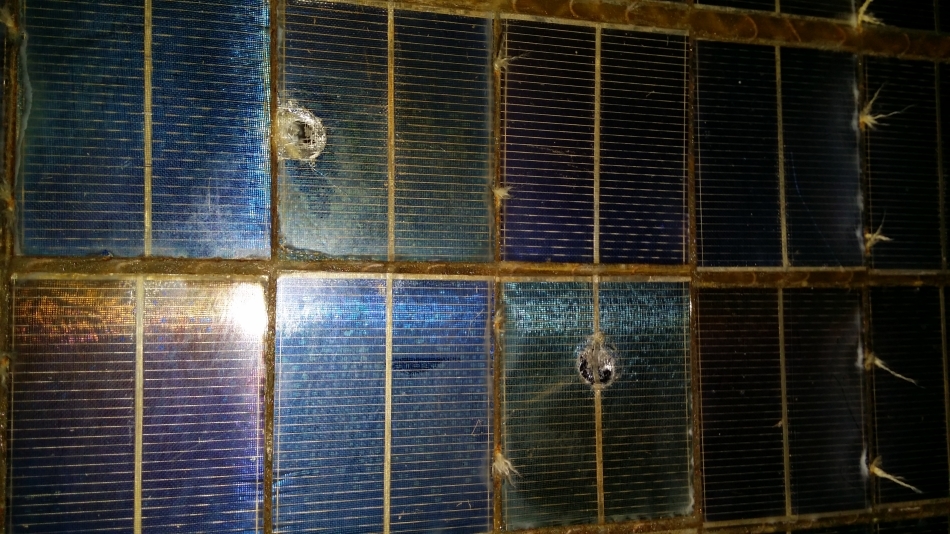
Inside the base unit of the Mir station

Now on the ISS such schemes have migrated to computer monitors

Space vacuum cleaner. It was possible to ride this (which was done by the astronauts). And on the ISS put a different model, which is no longer rolling.

The last hall with layouts for exhibitions. The layout of the "Federation" gives hope that sometime in the same hall its descent vehicles will also be standing.

Conclusion
At the exit we are waiting for an already familiar employee But his love is only partially brightened by the fact that the event is over.

A big thanks for the opportunity to see and touch the unique exhibits to Ivan Shchurov, a leading specialist in external communications and media work at RSC Energia, who organized the event, and TSNII RTK Design Engineer for inviting.
Source: https://habr.com/ru/post/397907/
All Articles